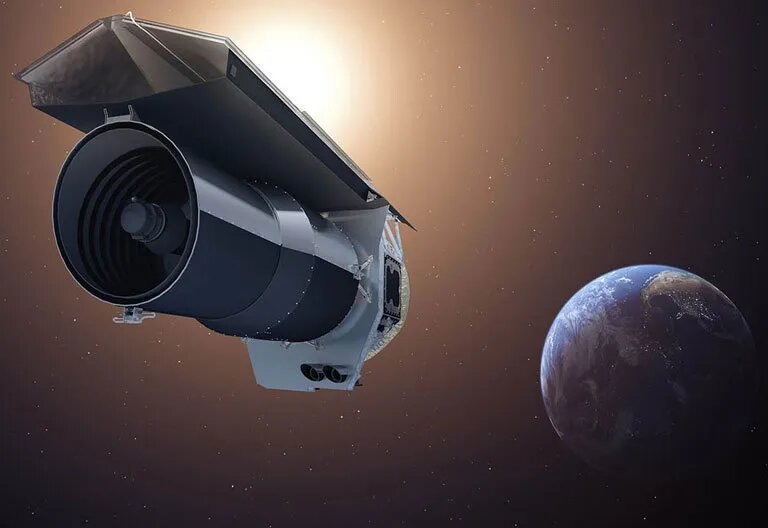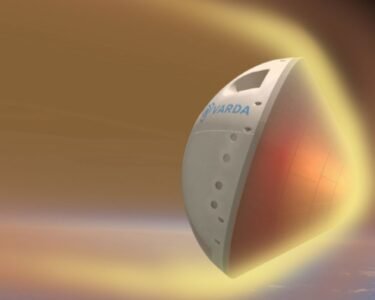The universe is vast and complex, and our ability to grasp it is limited by the instruments we have at our disposal. That’s where remarkable space-based observatories like the Spitzer Space Telescope come in – with its advanced infrared capabilities. This telescope allowed us to see the universe in a whole new light. That unlocks secrets that were previously hidden from us. In this blog, we will travel through time to learn about the Spitzer Space Telescope, its accomplishments, and the fantastic discoveries it has aided in.
But firstly we should know that,
What is the Spitzer Space Telescope?
This spacecraft was launched on August 25, 2003, at 5:35 AM. It aimed to study the cosmos in a completely different light. Orbiting at a height of 568 km and moving at a speed of 0.4741 km/s, Spitzer was a revolutionary piece of technology that gave us a new perspective on space. At $720 million, this project marked a significant investment for space travel in the future.
NASA launched the Spitzer Space Telescope as part of the Great Observatories Program, which included other space-based observatories like the Hubble Space Telescope, Compton Gamma-Ray Observatory, and the Chandra X-Ray Observatory. While those telescopes focused on visible light, gamma rays, and X-rays, respectively. The Spitzer was designed to detect infrared radiation, which is primarily heat radiation. This allowed it to observe objects in the universe that were too cool or obscured by dust to be seen with optical telescopes.

Moreover,
What was the use of the Spitzer Space Telescope?
The Spitzer Space Telescope was an essential tool when studying the cosmos in infrared light. Its primary function was to detect infrared radiation, mainly heat. Spitzer’s sensitive detectors have helped astronomers learn more about distant and hidden regions of the cosmos. Such as dusty stellar nurseries, the centers of galaxies, and newly forming planetary systems.
Using Spitzer’s infrared vision, astronomers have studied inaccessible phenomena. Such as failed stars (brown dwarfs), extrasolar planets, gigantic molecular clouds, and organic chemicals that could be the key to life on other worlds. As a whole, the Spitzer Space Telescope is crucial in solving cosmic puzzles.
Here is the important thing to note;
Is the Spitzer telescope still in space?
Yes, the Spitzer telescope is still in space but no longer operational. The Spitzer telescope lasted in the cold phase for about 16 years. The Spitzer Space Telescope, which NASA launched in 2003, was the most sensitive infrared space telescope ever built at the time of its launch. During its 16 years of existence, it fundamentally altered our understanding of the cosmos.
The associate administrator of NASA’s Science Mission Directorate in Washington is “Thomas Zurbuchen”. He says: “Spitzer has taught us about entirely new aspects of the cosmos and taken us many steps further in understanding how the universe works. It addresses questions about our origins and whether or not are we alone”. Moreover, he said: “This Great Observatory has also identified some important and new questions and tantalizing objects for further study, mapping a path for future investigations to follow. Its immense impact on science certainly will last well beyond the end of its mission.”
However,
What makes the Spitzer Space Telescope unique?
The Spitzer Space Telescope was unique for various reasons. One of the most remarkable features of Spitzer was its ability to detect infrared radiation. It allowed it to study cosmic regions hidden from optical telescopes. The Spitzer telescope also had a large mirror that measured 33 inches (85 cm) in diameter, which made it the largest infrared telescope ever launched into space.
Furthermore, Spitzer was the final mission in NASA’s Great Observatories Program – a family of four space-based observatories, each observing the Universe in a different kind of light. The program also includes the visible-light Hubble Space Telescope (HST), Compton Gamma-Ray Observatory (CGRO), and Chandra X-Ray Observatory (CXO). Spitzer was also unique because of its cryogenic telescope assembly, which contained the telescope and Spitzer’s three scientific instruments.
Here is to understand,
What can the Spitzer telescope see that others Cannot?
The Spitzer Space Telescope was capable of seeing cosmic regions that are hidden from optical telescopes. It could detect infrared radiation, which allowed it to study cooler objects in space, such as failed stars (brown dwarfs), extrasolar planets, giant molecular clouds, and organic molecules that may hold the secret to life on other planets. Spitzer also studied the centers of galaxies and newly forming planetary systems, which are difficult to observe with optical telescopes.
Spitzer’s ability to see the Universe in a different kind of light than optical telescopes allows astronomers to study the Universe in previously impossible ways. Overall, Spitzer’s unique capabilities made it an essential tool for understanding the Universe.
What are the Discoveries of the Spitzer space telescope?
The spitzer space telescope has helped in knowing the universe better than ever. Some of its major discoveries are:
- Spitzer detects heat radiation and infrared light. Scientists used Spitzer data to create the first exoplanet “weather map” in May 2009. This exoplanet weather map showed temperature changes on HD 189733b, a massive gas planet. The scientists also found roaring winds in the planet’s atmosphere.
- Infrared light usually penetrates gas and dust clouds better than visible light. Hence, Spitzer has shown star-birthing zones. Spitzer captured young stars emerging from the Rho Ophiuchi dark cloud. Astronomers call this cloud “Rho Oph.” The nebula is 410 light-years from Earth, near Scorpius and Ophiuchus.
- Spitzer found COSMOS-AzTEC3 in 2011. This set of galaxies’ light reached Earth after 12 billion years. Scientists believe proto-clusters like this one evolved into modern galaxy clusters. COSMOS-AzTEC3 was the furthest proto-cluster ever found. It helps researchers understand how galaxies started and evolved.
- Spitzer was the first telescope capable of directly identifying chemicals in the atmospheres of exoplanets back in 2007. Chemical compounds in two gas exoplanets were identified using spectroscopy. These gas-based “hot Jupiters,” HD 209458b and HD 189733b, orbit closer to their suns than our solar system’s gas planets. Directly studying exoplanet atmospheres could lead to the discovery of life on rocky worlds. This artist’s rendering depicts a heated Jupiter.
- Supermassive black holes reside in most galaxies. Spitzer found two of the most distant supermassive black holes, revealing galaxy formation history. Quasars are black holes with discs. Spitzer found two quasars that emerged less than 1 billion years after the cosmos. Their light took 13 billion years to reach Earth.
Let’s conclude this discussion:
Scientists initially designed the Spitzer Space Telescope for a short mission. But it exceeded expectations and continued to operate for over a decade. In January 2020, NASA announced that it was retiring the Spitzer Space Telescope due to its aging hardware and limited remaining capabilities. However, the Spitzer Space Telescope legacy will live on through countless discoveries. As it helped make the new avenues of research it opened up. The Spitzer mission will live on through its science.





